In a food web, what do the arrows represent?
The flow of energy
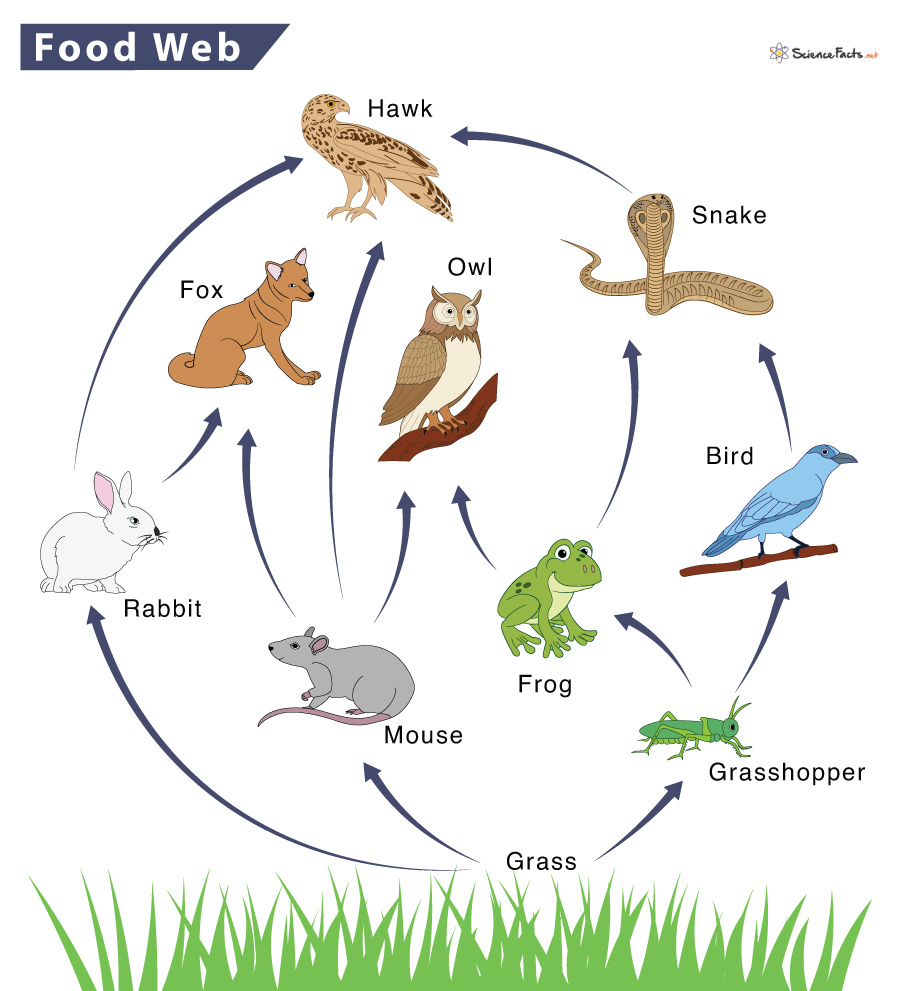
Name a producer in this food web
Grass
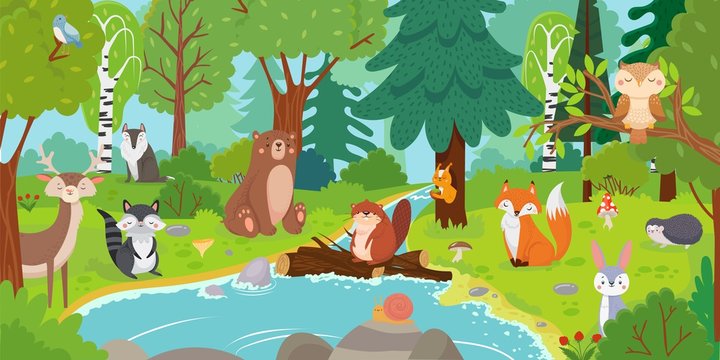
Name 3 things in this ecosystem that are biotic
Answers may vary (anything alive)

What does the X-Axis show?
The year

A 6th-grade class counted the variety and abundance of plants in two plots (Plot A and Plot B). Which plot has higher biodiversity? How do you know?
Plot B has higher biodiversity because it has a higher biodiversity index.

Name all primary consumers in this food web
Grasshoppers, Mouse, Rabbit
What are the three types of decomposers?
Fungus, bacteria, insects

Name 2 things in this ecosystem that are abiotic
Water, air, soil/sand, rocks
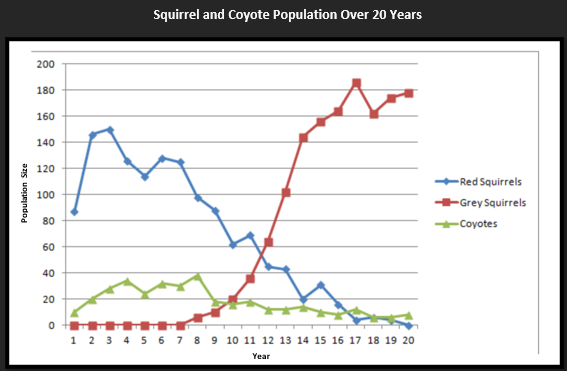
What does the Y-Axis show?
The population size
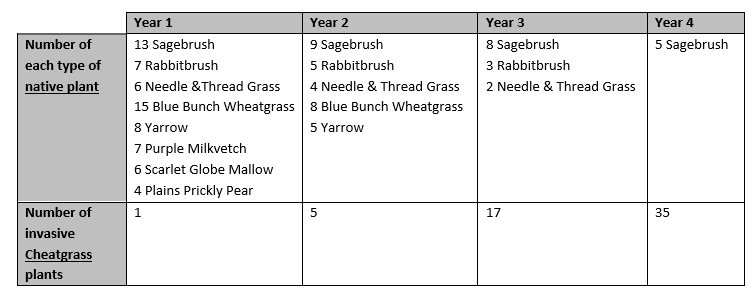
Cheatgrass is an invasive plant that was introduced into an ecosystem. A scientist noticed and started collecting data on the diversity of plants found in the ecosystem. The scientist collected data for four years, shown in the table.
How did the cheatgrass affect the diversity (variety) of native plants in the ecosystem? Be specific, use data!
The cheatgrass caused the variety of native plants to decrease from 8 types of native plants to only 1 type of native plant.
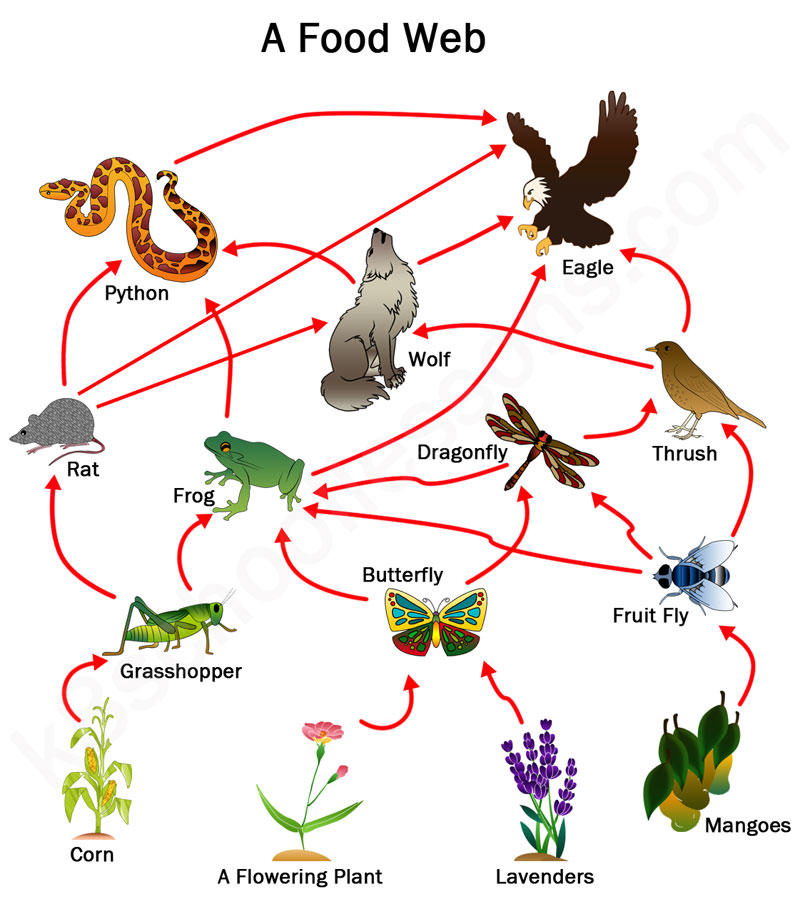
Name all of the secondary consumers
Rat, Frog, Dragonfly, thrush
What is the difference between a producer and a consumer?
A producer can make its own energy using sunlight. A consumer must eat another organism for energy.
A relationship that benefits both organisms is called...
Mutually beneficial relationship
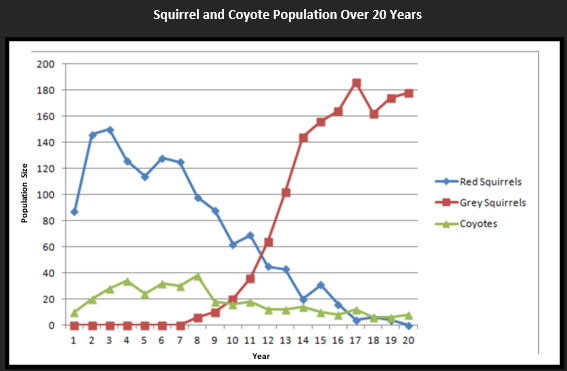
About how many Red Squirrels were there in Year 10?
60

A deer is a consumer in this ecosystem, and it only eats rabbitbrush.
How did the deer’s food supply change over the four years? Be specific, use data!
The food source for the deer decreased over the years starting at 7 plants until it disappeared completely reaching 0 in year 4 leaving the deer without a food source.
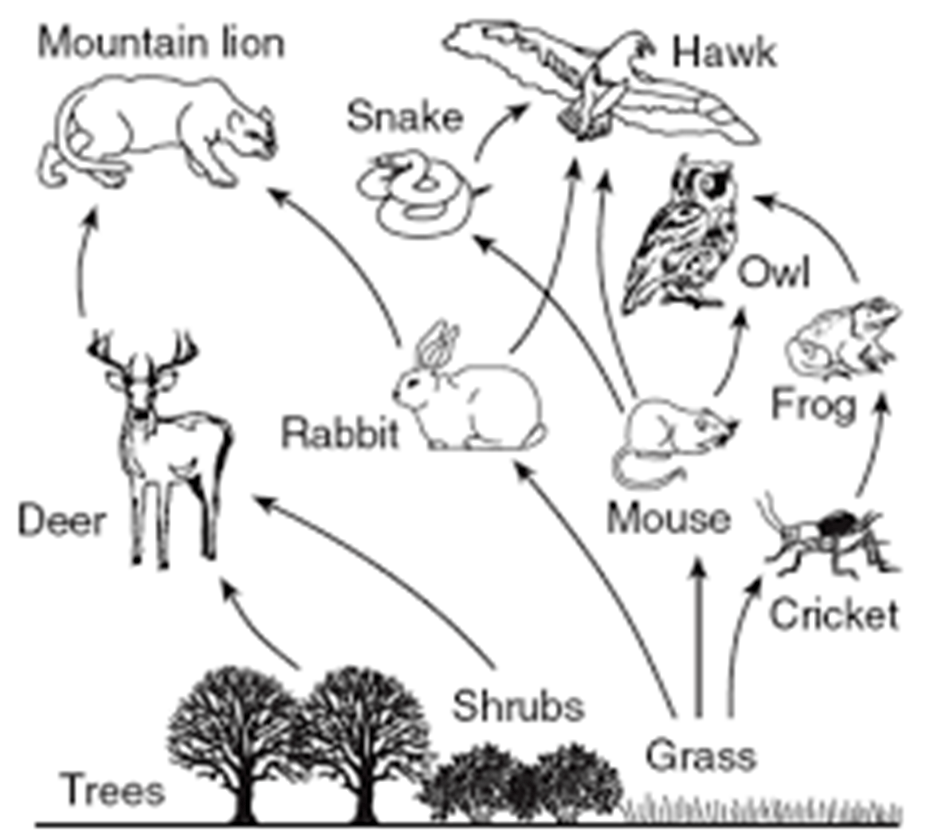
In this ecosystem, Mountain Lions were hunted to extinction (all Mountain Lions are now gone). Describe the impact this would have on at least two other organisms in the food web.
Deer and Rabbit populations would increase.
Hawk population would increase.
Tree, Shrub and Grass populations would decrease.
What does a decomposer do? How does it benefit an ecosystem?
Be sure to answer both questions!
A decomposer breaks down dead and decaying matter. It recycles the matter back into the soil as nutrients.
An organism that eats both plants and animals is called an...
Omnivore
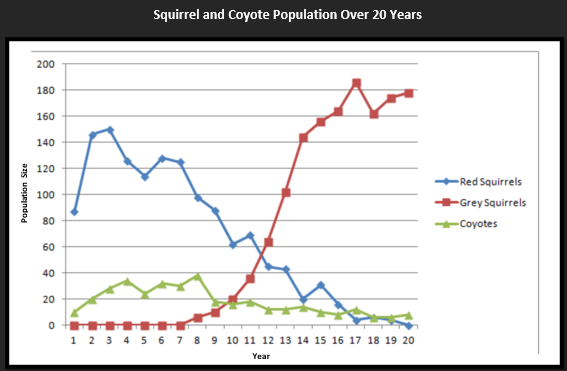
Based on the graph, do you think Grey Squirrels or native or invasive? You need at least 2 pieces of evidence
Invasive.
Grey Squirrels were not present in the ecosystem before year 7.
The Grey Squirrel population increased rapidly which shows that they probably do not have a natural predator in this ecosystem.

A deer is a consumer in this ecosystem, and it only eats rabbitbrush. When the rabbitbrush population changed, what do you think happened to the deer population? Be specific, use data!
The rabbitbrush population decreased from 7 rabbitbrush in year 1 to 0 in year 4. Because of this the deer population would decline due to lack of food. They may face extinction without access to food.
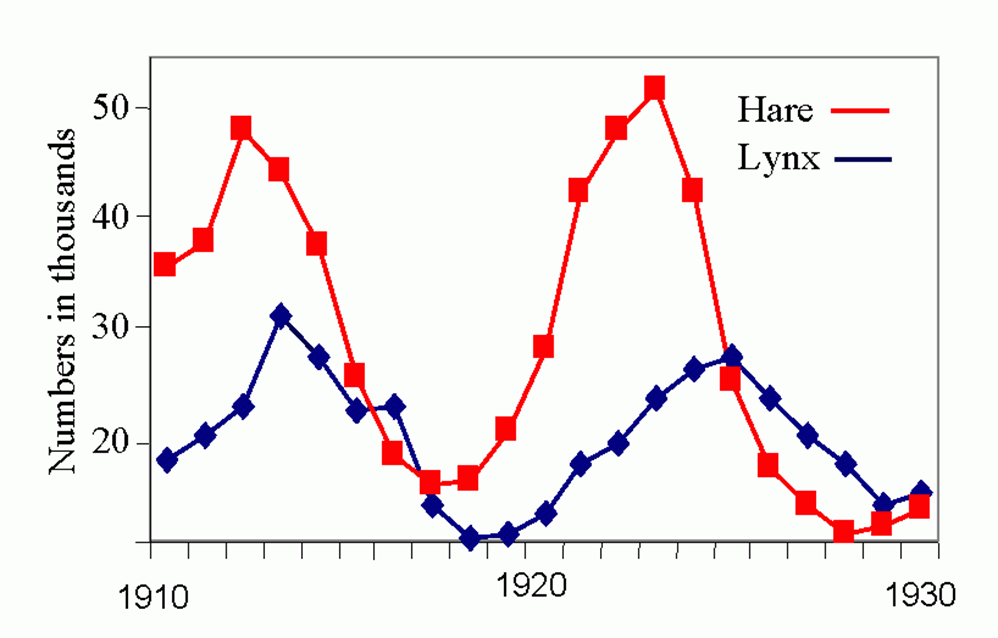
Based on this graph why do you think the hare population decreased 1924?
The lynx is eating the hare. The lynx population got so large that there was a big decline in the hare population.
What are the 3 products of decomposition?
Nutrients, carbon dioxide, water
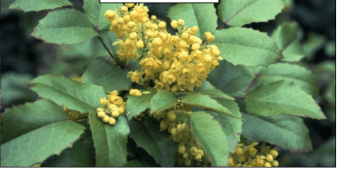
Name this plant (This will not be on the test!)
Oregon Grape
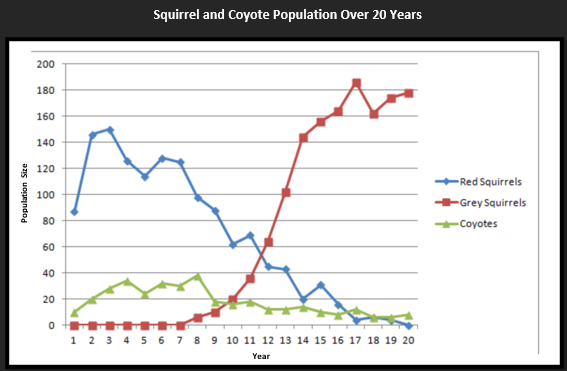
Using the graph, explain the relationship between Red Squirrels, Grey Squirrels and Coyotes. Be sure to explain HOW all 3 populations changed over time and WHY you think the populations changed.
Grey Squirrels (likely an invasive species) were introduced around year 7. Invasive species don't have natural predators and can typically have rapid population growth.
Grey Squirrels most likely caused competition with Red squirrels for resources causing a decline in the Red Squirrel population.
Coyote population also decreased after the introduction of Grey Squirrels. Coyotes probably eat Red Squirrels and the decrease in their population meant less food for the coyotes causing their population to decrease.
What makes a plant invasive? Why are invasive plants harmful?
Invasive plants are not native to the area. They were brought here usually through human activity. Invasive plants harm ecosystems because they can grow quickly and steal vital resources such as water, sunlight and nutrients from native plants causing them to decrease or disappear completely.